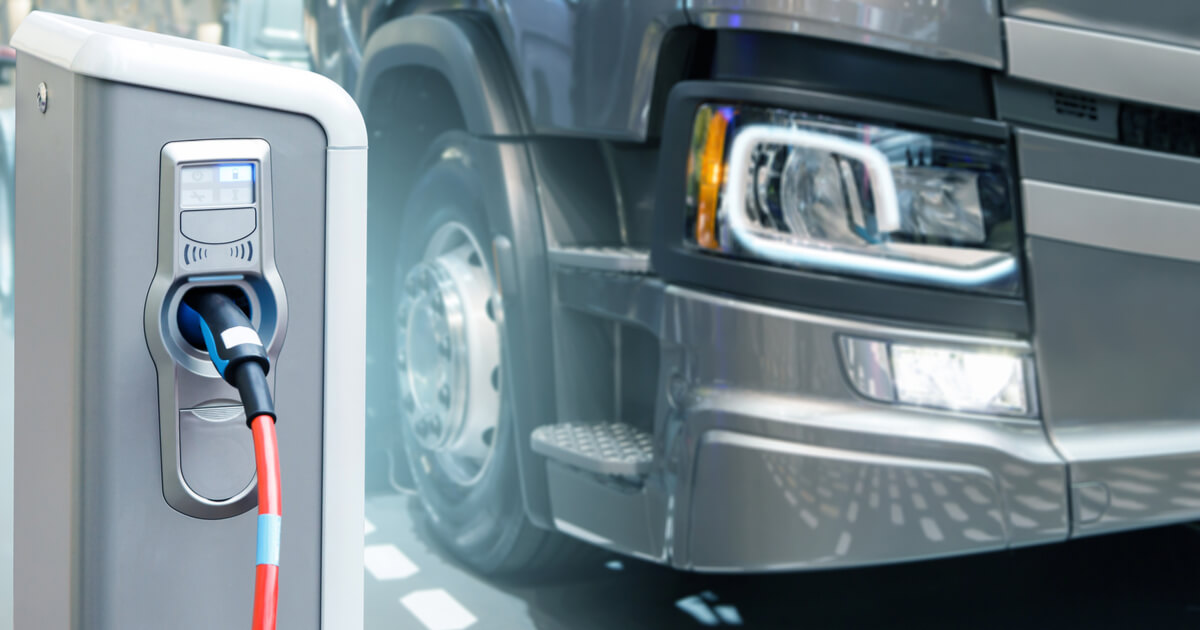
The global leader in food distribution to restaurants, schools, healthcare facilities, and the hospitality industry has jumped on the electric truck bandwagon in a big way. Sysco recently announced it signed a letter of intent to purchase 800 battery-electric Freightliner eCascadia Class 8 vehicles by 2026.
Freightliner eCascadia manufacturer, Daimler Truck North America, indicated the 800-truck order was the largest to date. The first wave of battery-electric Class 8 tractors are expected to be delivered by year’s end.
“Sysco is committed to making meaningful investments to support achievement of our climate goals, including those that encourage the development of electric tractors and trailers. We are eager to partner with a like-minded industry leader like Daimler Truck North America to deploy battery-electric trucks nationwide,” Sysco’s chief supply chain officer, Marie Robinson, reportedly stated. “This investment shows our commitment to sustainability and growing responsibly and will ultimately help us meet our goal of reducing our direct carbon emissions by 27.5 percent by 2030.”
The organization reportedly set an internal goal of electrifying at least 35 percent of its American truck fleet before 2030. Its Riverside, California, facility is fully engaged in constructing charging stations and adding solar panels to power its fleet. California has rolled out stringent mandates regarding zero-emissions commercial motor vehicles, and non-compliance could prove costly.
Robinson aired concerns about the need for a stable electrical grid. California experiences rolling blackouts during summer heatwaves, and states such as Texas suffered massive power outages when arctic cold fronts freeze power-generating equipment.
“(A grid) where we don’t have to worry about it when there is a 110-degree heatwave in Texas. Working together and making sure that — with our regulatory partners and elected officials — we understand the plans. Everything falls apart if we don’t have that clean, safe electric grid to depend upon,” Robinson reportedly said.
That may be why solar panels are being integrated into Sysco’s Riverside charging station infrastructure. And Sysco CEO Kevin Hourican touted the transition to battery-electric semi-trucks as part of the outfit’s science-based goals.
“Research from the World Economic Forum suggests that companies who make progress in these important areas drive improved corporate social responsibility over time compared to their peers,” Hourican reportedly said. “To ensure that we walk the walk, our board is prepared to incorporate environmental, social and governance criteria as a part of our executive compensation program beginning next year. The work we are doing is the right thing to do, and we strongly believe that it is also good for our business and our investors.”
Headquartered in Houston, Texas, Sysco operates more than 85,000 tractors across 326 distribution facilities to service 650,000 customers. Founded in 1969, the multinational corporation’s annual revenue reportedly exceeded $51 billion in 2021, earning it a number one ranking for American companies on the Fortune 500 list, and 69th worldwide. Employing more than 58,000 people, the food and small wares distributor reportedly offers truckers salaries ranging between $53,000 and $110,000, depending on experience and location.
Sources: abasto.com, ttnews.com











So how will the trucks continue to run when the electric grid is down and there is no way to charge. What if there are rolling black outs and the grid is shut down in 12 hour blocks. Not to mention the cost of those batteries! What if USA grid is taken over by foreign nations…
Oh, BTW….guess how those batteries are made…Hint: Fossil Fuel
Answer…..No food delivery or it’s severely impacted…no school lunches
Sysco = stupidity and/or anyone who buys an electric vehicle
And guess who owns the majority of the precious metals that go into making the batteries???
Answer: China!
You didn’t read the article obviously. They said the charging stations they will be building will have solar, so it will have power, even if the grid is out. It will probably have a battery storage area to accumulate energy from the panels when it’s dark outside or cloudy when the panels are producing less power.
More than a dozen battery plants are being built in the US and set to open by 2025, several lithium brine plants are being built as well in the US. This will significantly reduce the price of batteries. The era of China being a large source of ingredients for batteries is coming to an end.
BTW, Australia is actually the largest supplier of lithium in the world.
You are too blinded by politics and hate for “the other side” to understand how this works.
Oh, yeah. Someone made a great point. What about when gas stations have no power? They don’t typically have a generator, so you can’t pump gas without power
And guess who owns the majority of the precious metals that go into making the batteries???
Answer: China!
See my comment above, it applies to you too.
Charles, you are factually incorrect in your response, Chile produces the most Lithium in the world. Unfortunately, China is still 3rd on the list after Australia. All that said, the process of producing electric vehicles relies heavily on fossil fuels, to the extent that it is completely inefficient. This is a bad idea.
Charles have you kissed Beijing Biden’s A$$ today? Oh yes indeed you did it’s in your comment above and this applies to you libtard!
LOL, such an idiotic comment. I’m a registered Republican. I’m smarter than you, which is why I understand how this works
He’s in charge of changing Joe’s diaper.
What happens when a winter traffic accident shuts down an interstate for days. Do they order a bucket of electricity to fuel the truck?
Did climate change start in the last few years. They told us in school that a huge glacier melted a few million years ago. Don’t know how that happened. Couldn’t drive there to see it, no cars back then. And the scientists say wooly mammoths used to roam in an area now called the Arctic. It was warm before it got cold. Maybe we didn’t invent climate change.